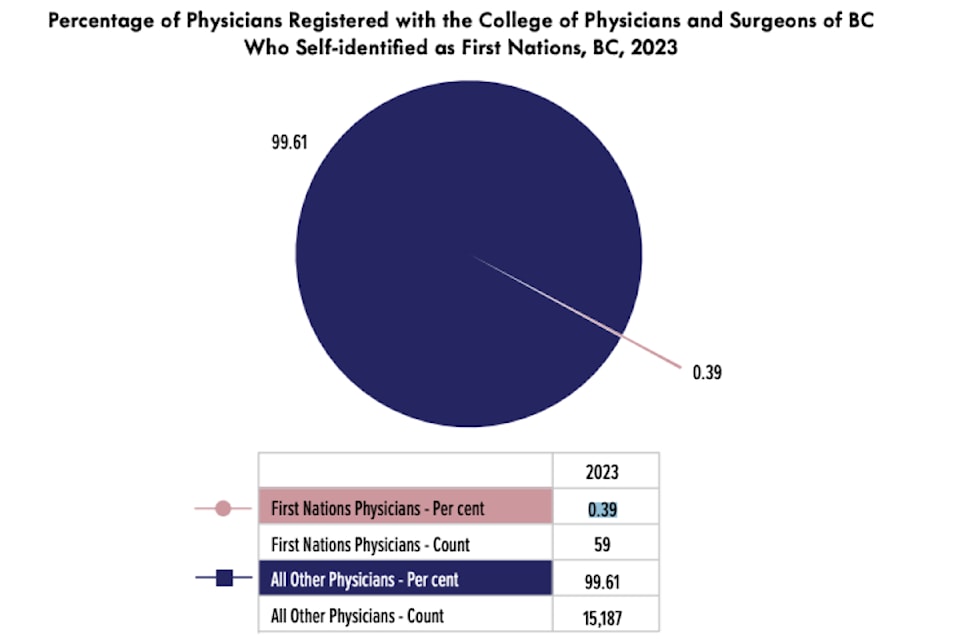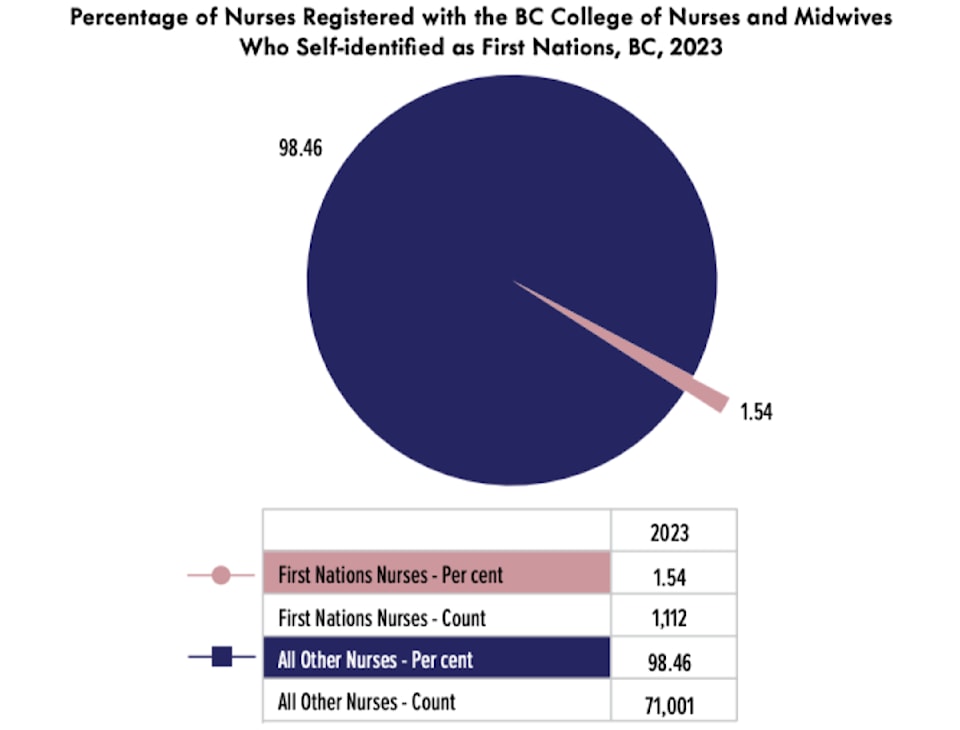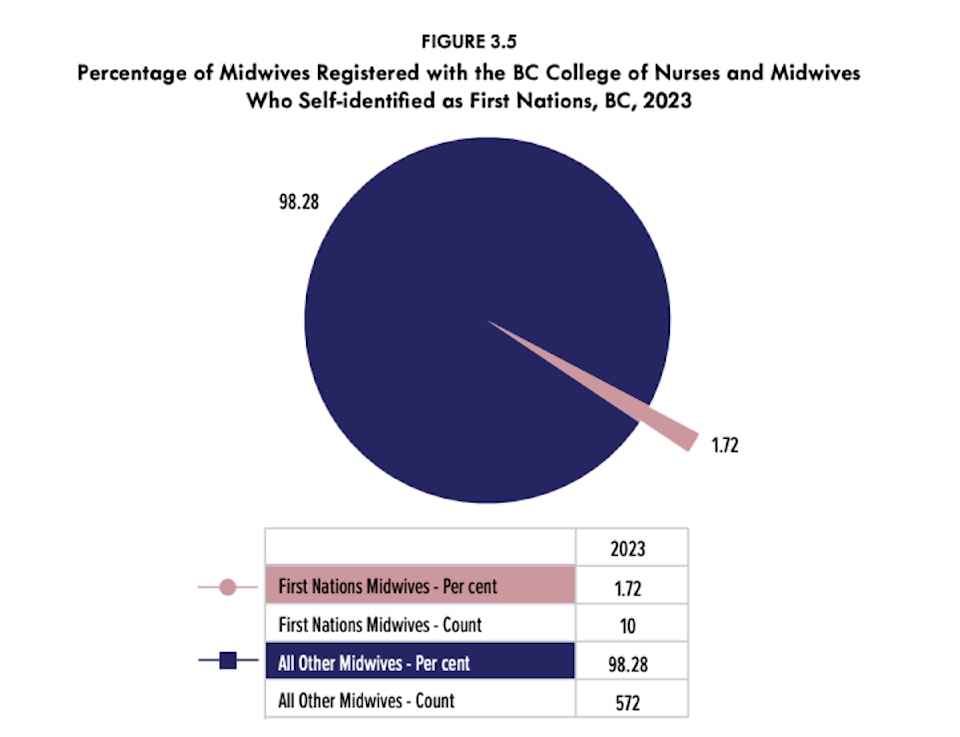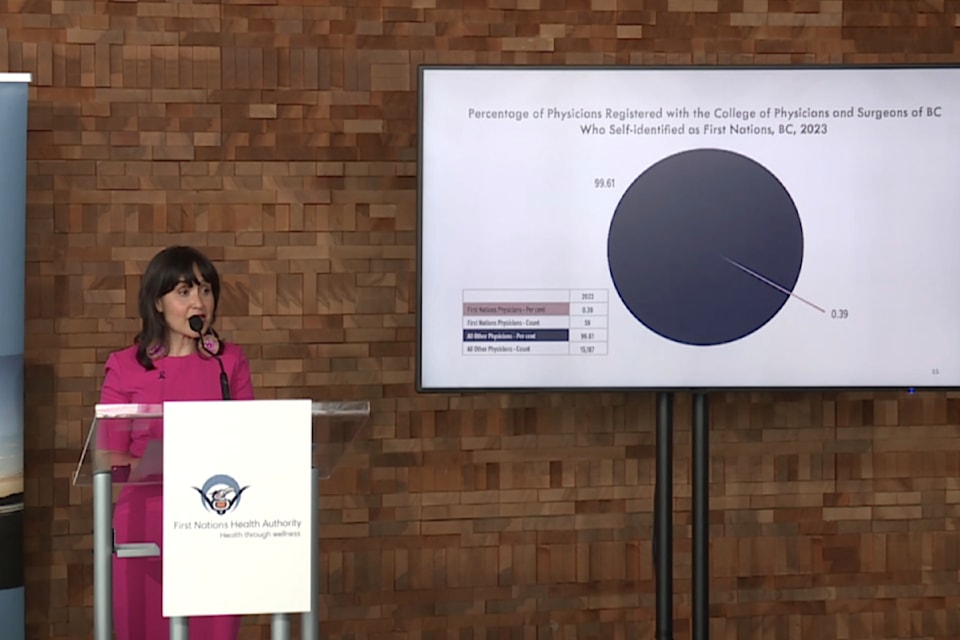A B.C. health authority says there has been no meaningful change to the proportion of physicians in the province who identify as First Nations, three years after a baseline report was first released.
The First Nations Health Authority as an update to a 2021 baseline report, and the number of physicians who identify as First Nations increased by decimal points. But for the first time, the health authority and the provincial health office were able to share the proportion of nurses and midwives who self-identify as First Nations.
There are a total of 15,246 physicians in B.C. registered with the College of Physicians and Surgeons. The physicians had the opportunity to self-identify as First Nations when registering, with 59 identifying as First Nations. In total, 150 physicians identified as Indigenous, which can also include Inuit and Métis.
The physician count amounts to 0.39 per cent up from 0.32 per cent in 2019 ���߲��о���� about 16 additional First Nations physicians over a four-year period.
First Nations people make up about four per cent of B.C.'s overall population.

Dr. Danièle Behn Smith, the deputy provincial health officer for Indigenous Health in B.C., said there are two issues with those numbers.
"Obviously is, one, how do we really create those healthy building blocks so we can bring more First Nations through medical training? But I also think about that big blue circle and those 99.61 per cent of people that make up our colleagues really need to be doing their heavy heart work of undoing and unlearning and eradicating Indigenous-specific racism."
Following the release of the baseline report in 2021, the B.C. College of Nurses and Midwives took the steps to begin collecting and sharing of data on the proportion of First Nations nurses and midwives with the health authority. The report notes the goal is to prompt an "increased focus" on the recruitment and retention of First Nations and other Indigenous health-care practitioners across the B.C.'s health-care system.
Behn Smith said the percentages are slightly higher for nurses and midwives, but it still falls below two per cent overall for each.

Only 1.54 per cent of nurses registered with the college in 2023 self-identified as First Nations. There are a total of 72,113 nurses registered with the college and 2,351 of them identified as Indigenous, with 1,112 identifying specifically as First Nations.
The report breaks down the percentages of First Nations in each nursing type: 2.15 per cent are licensed practical nurses, 1.88 per cent are nurse practitioners, 1.47 per cent are registered psychiatric nurses and 1.34 per cent are registered nurses.
In 2023, 10 midwives in B.C. were First Nations. That's 1.72 per cent of all 582 midwives registered with the B.C. College of Nurses and Midwives.
The report adds that prior to settler-colonial contact, First Nations midwives had an important role in the physical and ceremonial aspects of pregnancy, childbirth and the post-partum period, but "racist, patriarchal, settler-colonial policies that privilege the Western biomedical approach to pregnancy" banned Indigenous midwives.

Behn Smith added that while the report doesn't frame these statistics this way, it's "really a reflection of how frequently Indigenous kids are pushed out of mainstream education."
Education was one of two indicators in the report that saw an improvement on the last three years ���߲��о���� 4.3 per cent. It's measured by the number of First Nations people completing high school within eight years of beginning Grade 8.
"I think once we are in medical training, I think it really is about bringing in a true value and honouring of our obligations to the First Peoples of these territories and recognizing that we have valuable systems and cultures, knowledges that we carry with us," she said.

